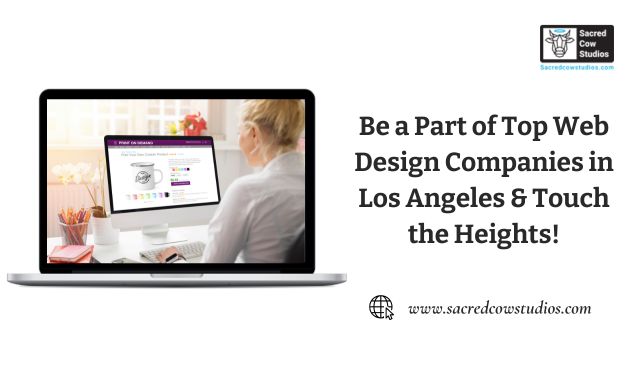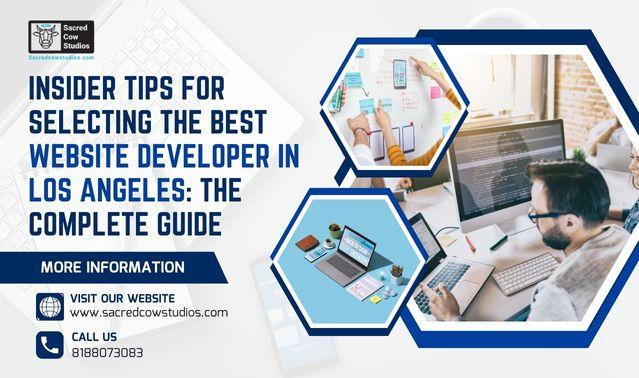Creating a professional and engaging website is a key investment for any business. In Los Angeles, where competition is high and visual branding matters, the right web design company can transform your online presence and help your business stand out. But with so many options, how do you know which partner is the right fit?
This guide outlines the most important factors to consider before selecting a web design company—so your decision supports your goals, brand identity, and long-term growth.
A thoughtfully built website strengthens credibility, supports customer engagement, and serves as the digital core of your brand. Making the right choice from the beginning sets the stage for long-term success.
1. Know Your Website Goals and Audience
Every business has unique goals for their online presence. Before selecting a web design company, identify what your website should achieve. Is it meant to attract local customers, offer online booking, generate leads, or support eCommerce?
Clarify your needs:
- Define your primary goals (sales, education, bookings, brand visibility)
- Identify your target audience’s behaviors and expectations
- Decide on any special features (live chat, event calendars, photo galleries)
Knowing what you want helps the design team understand your vision and offer relevant solutions.
2. Evaluate Design Style and Functionality
Not all websites are created equal. Some prioritize aesthetic appeal, while others focus on utility and performance. The best web design balances both. Take time to explore the company’s portfolio to ensure their style matches your expectations.
Look for:
- Sites that feel cohesive, clean, and user-friendly
- Responsive designs that work well on desktop and mobile
- Fast-loading pages with clear navigation
- Creative use of imagery, color, and typography
You can browse design offerings from Sacred Cow Studios’ web design services to explore high-performance digital solutions that suit diverse business goals.
3. Consider Their Development and Platform Options
It’s not just about looks—a well-functioning website is equally critical. Ask about the platforms and frameworks they use. Whether it’s WordPress, Webflow, or a custom CMS, it should be easy to update and manage.
Ask the team:
- What platform will my website be built on?
- Can I update content myself?
- Do you offer integrations with tools like email marketing or CRMs?
- Will the site be optimized for search engines?
The right team will ensure the backend is just as functional as the front-end is beautiful.
4. Understand the Full Scope and Budget
Clarity around project details is essential when planning your website. A well-defined scope includes timelines, creative direction, technical requirements, and post-launch considerations. Knowing what’s included at each stage builds trust and keeps the project on track.
Important aspects to review:
- Confirm what phases are included—from planning to launch
- Check whether revisions are part of the agreement
- Determine if training or content updates are offered
- Ask about support once the site is live
- Review a written proposal outlining design goals, functions, and costs
A detailed breakdown supports smoother collaboration and ensures expectations are aligned before work begins
5. Ask About Post-Launch Support and Maintenance
Your website needs to evolve as your business grows. Look for a partner who offers ongoing support after the site goes live. Whether it’s troubleshooting, plugin updates, or adding new content, maintenance is key.
Ongoing services may include:
- Regular performance updates
- Website backups and security monitoring
- Technical support for functionality issues
- Design tweaks or content refreshes
- Guidance on how to manage and scale features
A long-term relationship with your web team can make a big difference as your digital needs expand.
6. Look for Strong Communication and Process Clarity
Effective communication ensures your vision is brought to life without delays or misunderstandings. From your first conversation, assess how the team interacts and guides the process.
Look for teams that:
- Ask thoughtful questions about your business
- Set realistic deadlines and project milestones
- Explain their workflow and deliverables clearly
- Offer collaborative tools or client dashboards
Transparent, organized teams are more likely to deliver consistent results with minimal revisions.
7. Read Testimonials and Online Reviews
Client feedback can tell you a lot about reliability, professionalism, and overall quality. Don’t hesitate to read reviews on third-party platforms, check testimonials on the company’s website, and even request references.
Pay attention to:
- Comments about responsiveness and timeline accuracy
- Feedback on creative solutions or custom work
- Stories of smooth launches and positive follow-up support
- Any red flags about delays or communication gaps
Past client experiences offer helpful insight into how the company handles real-world projects.
Conclusion
Choosing a web design company in Los Angeles is about more than finding a team that builds nice-looking websites. It’s about forming a partnership that understands your goals, builds a functional and scalable platform, and helps your brand thrive in a digital-first world.
At Sacred Cow Studios, we specialize in designing custom websites that reflect your unique brand voice while offering strong functionality and performance. Whether you’re launching a new business or revamping your current site, we’re here to help you succeed. Explore our tailored solutions to begin your journey toward a professional, high-impact website.
Frequently Asked Questions
1. How long does a typical web design project take?
Timelines vary depending on the scope, but most websites take between 4–8 weeks from concept to launch.
2. What should I prepare before contacting a web design company?
Have a clear idea of your goals, desired features, and target audience. Visual references or existing branding also help.
3. Can I update my site after launch?
Yes. Most websites are built on CMS platforms like WordPress or Webflow, allowing for easy updates with minimal training.
4. What’s the difference between web design and web development?
Web design focuses on layout, visuals, and user experience, while development involves the code and functionality behind the site.
5. Is SEO included in web design services?
Basic SEO setup is often included—such as optimized headings, image tags, and meta descriptions—but full SEO campaigns are typically a separate service.




